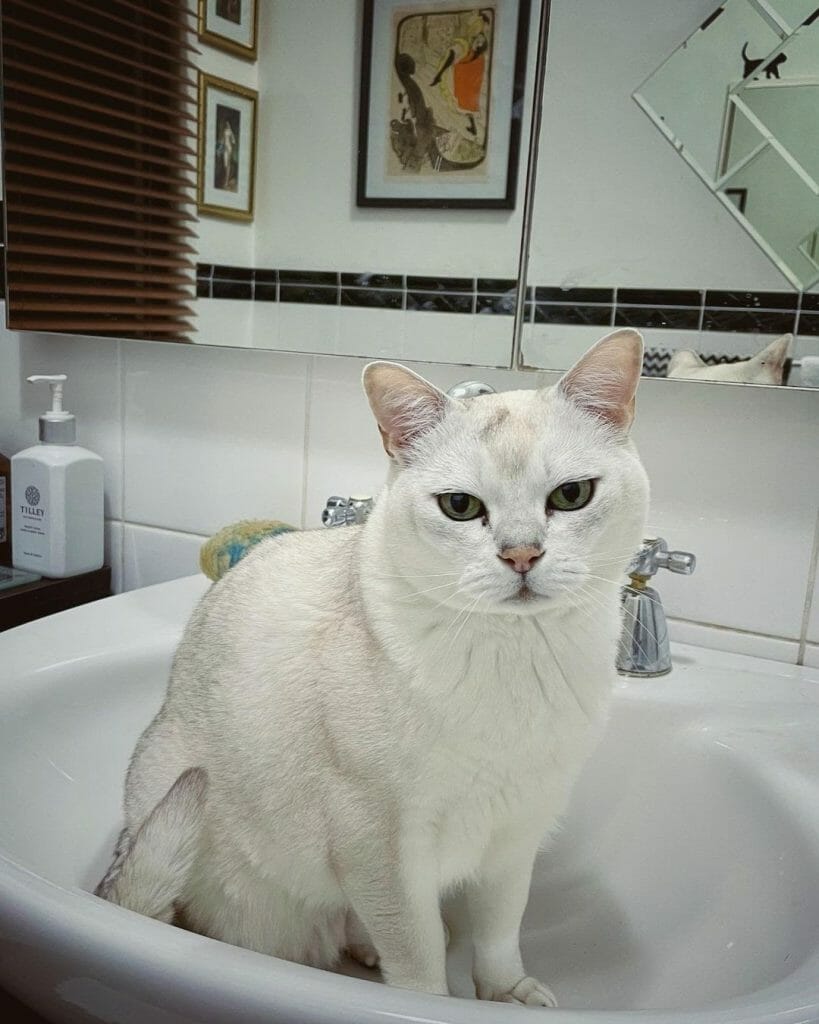Are Burmilla Cats Hypoallergenic? Plus 8 Ways to Minimize Cat Allergies
As unfortunate as it sounds for Burmilla cat lovers, but the breed is not known to be hypoallergenic. In fact, no cat is! Every breed, no matter what coat type it has, continuously sheds and produces dander that can trigger a reaction to hypersensitive people.
However, you don’t have to be too fazed about this because it’s still possible for you or for anyone to own the ever-coveted Burmilla cat. You just have to be careful and prepared once this amazing cat gets into your home. So, how do you do this? We’ll give you all the answers you need through this article.
Table of Contents
How Bad Do Burmilla Cats Shed?
Not bad at all! Their coats shed very little and that means little need for extensive grooming. Despite the low rate of shedding, Burmilla cats still consistently let go of old hairs and have them replaced with new ones. Their bodies undergo four different stages in hair growth which are the anaphase, catagen, telogen, and exogen.
If compared to other cat breeds, allergy sufferers will do better with a Burmilla cat. However, this doesn’t mean that you can compromise your health. Aside from the all-year-round shedding, there are two special seasons in which the breed starts to shed more than normal.
Owners must watch out for the spring and fall seasons. During these times, you will see loads of fur sticking on the couch as the cat gradually replaces his winter jacket for a lighter coat during spring or lets go of his summer vest for a thicker fur to fight off the cold as the winter approaches.
What Causes Cat Allergies?
When we experience having allergy attacks, we are quick to assume that it is because of our pet’s hair, but this is far from the truth. Cats, particularly the Burmilla breed, produce the Fel D1 protein known to be an allergen. This is what triggers certain reactions to people who have allergies. Cats are self-groomers which means they constantly lick themselves. When they do this, the protein gets spread throughout the body.


There are 8 allergens found in cats according to the World Health Organization/International Union of Immunological Societies (WHO/IUIS) Allergen Nomenclature Sub‐Committee and the Fel D1 is the most prominent allergen as this accounts for at least 96% of all human cat allergies.
The remaining allergens are Fel D2 to 8 with Fel D4 that can be mainly found through the cat’s saliva. Thankfully, it has been discovered that 63% of people who have cat allergies have antibodies to fight off the Fel D4 protein.
Signs You Are Allergic to Burmilla Cats
If you are not sure whether you have cat allergies or not, we advise that you visit your allergist for a more accurate result. There are cases when owners start experiencing allergy symptoms and are quick to blame the cat only to find out that they were allergic to dust or pollen.
Of course, there are also common signs that indicate that you might be allergic to your cat. Here is the list:
- Constant coughing
- Uncontrollable wheezing
- The appearance of hives or rash on the chest or face
- Runny, itchy nose
- Red, swollen, and watery eyes
- Redness of the skin after getting licked by the cat
- Sneezing
8 Ways to Minimize Burmilla Cat Allergies


Being allergic to cats does not right away mean that you have to rehome your pet. Imagine after having all that bond and time spent with a precious little feline such as the Burmilla, you will, later on, end up getting separated from what would have been your lifelong companion!
Although in severe cases, being away from furry pets is the best thing to do, those who have mild reactions can continue living with their cats. Simply follow certain measures to avoid health risks and to also maximize a positive experience with the cat!
To help you in this challenging journey as a cat lover, here are 8 tested and proven ways to minimize your cat allergies:
Regular Brushing
Brush him as often as needed, whatever works best for the both of you. By committing to run through his body a slicker brush, you are speeding up his shedding process. All loose and dead hairs that are not released off his skin yet will go directly to the brush instead of ending up anywhere inside your home.
With countless numbers of available brushes for cats available online, not all serve their exact purpose. So, to save you from the hassle of choosing, why not add to your cart the Aumuca Slicker Brush? Guaranteed, brushing your Burmilla pet will be easy and convenient thanks to its many self-cleaning features.
Scheduled Baths


To make sure that there are no more traces of protein allergens on the skin and coat of the Burmilla cat, give him a nice, warm bath. Use a mild shampoo and gently massage his skin and fur for a few minutes then rinse thoroughly.
To significantly reduce your pet’s dander, go for Allertech Pet Shampoo. Many users swear by this product!
Wash Hands After Contact
Changing your habits will dramatically transform your life if you are allergic to cats yet you own a Burmilla feline. Every after getting into contact, NEVER touch your face, not even in the slightest way! Head directly to the sink and wash your hands up to your arms with water and soap. Take note of the other body areas your cat has touched and make sure to wash them too.
Clean Your Home Often
Lessen your exposure to dander and cat hair fall by regularly cleaning your home. Use quality Eureka vacuum cleaners so you will end up leaving each couch and furniture spotless and hair-free. To ensure that the air you breathe is also clean, invest in a Himox Smart Air Purifier for each of your rooms. Not only would it reduce the presence of dander but as well as remove 99.97% of unwanted microbes.
Use Protective Gear in the Garden
Even though you place pee pads or litter boxes for your Burmilla cat’s necessities, there can be times when he’ll do it in the garden. Wear gloves if you do gardening to avoid contacting the Fel D1 protein that can be present in your cat’s urine or poop.
Set House Limits
Avoid the urge of sleeping with your Burmilla cat. Your bed must be hair-free or else you’ll be sneezing all night long! Help your cat understand that he is not meant to be in your room and you can do this by training him to keep off from your space.
Get Medication
In case of emergency, anti-allergy meds will save the day. Claritin, Cetirizine, Allegra, or whatever your doctor prescribed will keep the symptoms from worsening if taken at the onset of symptoms.
Neuter or Spay Your Burmilla Cat
Female cats produce lower levels of Fel D1 and this will even drop if she is spayed. Meanwhile, neuter your male Burmilla cat so his protein allergen levels will be similar to that of a female.
